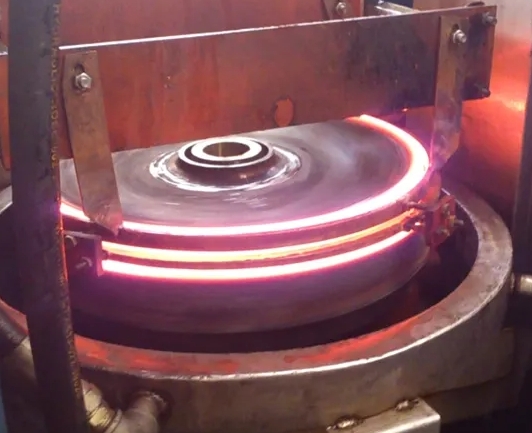- 21
- Jul
Zestawienie dziesięciu powszechnych metod hartowania wysokoczęstotliwościowej maszyny hartowniczej (1)
Podsumowanie dziesięciu powszechnych metod hartowania hartownica o wysokiej częstotliwości (1)
1. Single medium (water, oil, air) quenching
Single medium (water, oil, air) quenching: Quenching the workpiece that has been heated to the quenching temperature into a quenching medium to cool it completely. This is a simpler quenching method and is often used for carbon and alloy steel workpieces with simple shapes. The quenching medium is selected according to the heat transfer coefficient, hardenability, size and shape of the parts.
2. Podwójne średnie hartowanie
Dual-medium quenching: The workpiece heated to the quenching temperature is first cooled to the Ms point in the quenching medium of a high-frequency heating machine with strong cooling capacity, and then transferred to the slow-cooling quenching medium to cool to room temperature to achieve different quenching cooling temperatures range, and has an ideal quenching cooling rate. It is used for complex shapes or large workpieces made of high carbon steel and alloy steel, and carbon tool steel is also mostly used in this method. Commonly used cooling media are water-oil, water-nitrate, water-air, oil-air. Generally, water is used as a quick-cooling quenching medium, oil or air is used as a slow-cooling quenching medium, and air is less used.
3. Martensite graded quenching
Hartowanie ze stopniem martenzytycznym: Stal jest austenityzowana, a następnie zanurzana w ciekłym medium (kąpiel solna lub kąpiel alkaliczna) o temperaturze nieco wyższej lub niższej niż górny punkt Martensa stali, utrzymywanej przez odpowiedni czas oraz wewnętrznej i zewnętrznej części stali są poddawane obróbce. Po osiągnięciu przez warstwę temperatury średniej jest ona wyprowadzana do chłodzenia powietrzem, a przechłodzony austenit jest powoli przekształcany w proces hartowania martenzytu. Jest on zwykle stosowany do małych przedmiotów obrabianych o skomplikowanych kształtach i ścisłych wymaganiach dotyczących odkształceń, a narzędzia i matryce ze stali szybkotnącej i wysokostopowej są również powszechnie hartowane tą metodą.
4. Martensite graded quenching method below Ms point
Martensitic graded quenching method below Ms point: When the bath temperature is lower than the Ms of the workpiece steel and higher than Mf, the workpiece cools faster in the bath, and the same result as the graded quenching can be obtained when the size is larger. Commonly used for larger size low hardenability steel workpieces.
5. Bainite isothermal quenching method
Bainite isothermal quenching method: The workpiece is quenched into a bath with the lower bainite temperature of the steel at an isothermal temperature, so that the lower bainite transformation occurs. Generally, it is kept in the bath for 30~60min. There are three main steps in the bainite isothermal quenching process: ① austenitizing treatment; ② cooling treatment after austenitizing;

